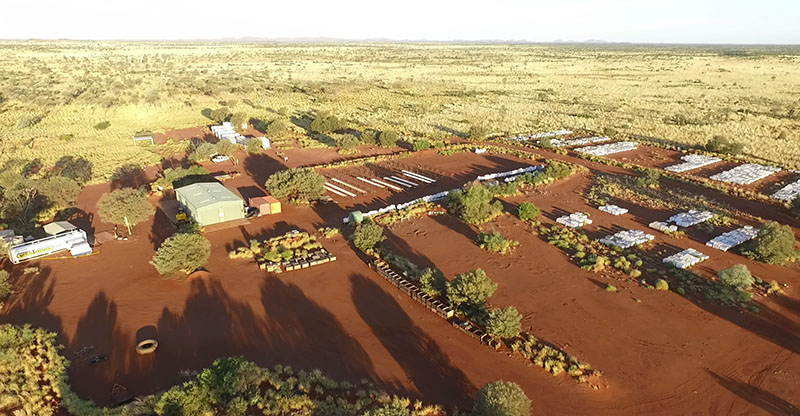In June, Oz Minerals launched an energy & mining collaboration (EMC) with six other companies to seek out innovative ways to develop and incorporate renewable energy and demand management into mine sites. The EMC, it seems, is already finding influence as Oz Minerals revealed in a progress update to its West Musgrave Project that the miner is looking to operate a 55 MW hybrid diesel-solar-wind solution as a baseline of up to 70% of the mine’s operational needs. However, Oz Minerals is looking to Large-scale solar PV and wind solutions to “reduce the project’s reliance on high cost fossil fuels”.
The West Musgrave Project, a joint venture of Oz Minerals (70%) and Cassini Resources (30%), is a copper and nickel mine in Western Australia (WA), approximately 800km west of Uluru in the eastern Gibson Desert by the border junction of WA, South Australia (SA) and the Northern Territory (NT). Considering its location, solar PV and wind generation is a no-brainer, the forecast for the expansive region hasn’t changed much over the generations, relentless sun, just ask the Pintupi Nine.
Nevertheless, Oz Minerals collected baseline data over the last year which has “demonstrated a high quality, consistent solar and wind resource is available, with higher wind velocities at night offsetting the lack of solar power.”
The nascence of the project and the relative under-development of mining infrastructure in the West Musgrave Province means that power costs will account for around 40% of the entire project. Oz Minerals’ CEO Andrew Cole said, “the use of hybrid power solutions…could result in a significant reduction in power usage,” and “have the potential to reduce our carbon footprint and power costs versus a traditional mine footprint while improving overall project economics.”
Oz Minerals says that it has received a large number of proposals from major utilities, independent power providers, infrastructure funders and equipment manufactures toward the continuance of goal to power the future mine via largely renewable resources.
Mining companies of varying sizes the world over are turning to solar PV and wind to recover the soaring cost of fossil fuels, especially as battery-storage advancements have begun to ensure continuous mine site productivity. Alinta Energy is currently in the process of building, owning and operating the 60 MW Chichester Solar Farm to replace a diesel generator at its Christmas Creek iron ore mine in the Pilbara.
Other mining companies are also beginning to put their disused mine sites to good use, such as GBM Gold, which is planning to repurpose the Woodvale evaporation ponds near Bendigo in central Victoria to build a 60 MW solar farm.
This content is protected by copyright and may not be reused. If you want to cooperate with us and would like to reuse some of our content, please contact: editors@pv-magazine.com.









By submitting this form you agree to pv magazine using your data for the purposes of publishing your comment.
Your personal data will only be disclosed or otherwise transmitted to third parties for the purposes of spam filtering or if this is necessary for technical maintenance of the website. Any other transfer to third parties will not take place unless this is justified on the basis of applicable data protection regulations or if pv magazine is legally obliged to do so.
You may revoke this consent at any time with effect for the future, in which case your personal data will be deleted immediately. Otherwise, your data will be deleted if pv magazine has processed your request or the purpose of data storage is fulfilled.
Further information on data privacy can be found in our Data Protection Policy.